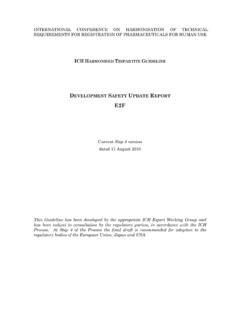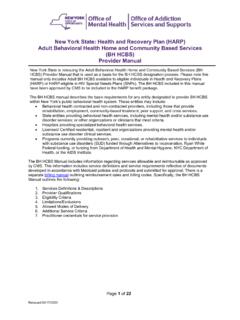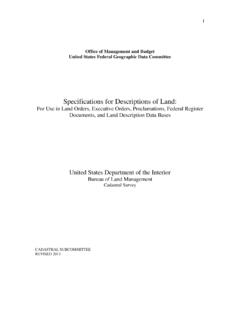Transcription of ICH HARMONISED TRIPARTITE GUIDELINE
1 INTERNATIONAL CONFERENCE ON HARMONISATION OF TECHNICAL. REQUIREMENTS FOR REGISTRATION OF PHARMACEUTICALS FOR HUMAN USE. ICH HARMONISED TRIPARTITE GUIDELINE . THE CLINICAL EVALUATION OF QT/QTC INTERVAL. PROLONGATION AND PROARRHYTHMIC POTENTIAL FOR NON- ANTIARRHYTHMIC DRUGS. E14. Current Step 4 version dated 12 May 2005. This GUIDELINE has been developed by the appropriate ICH Expert Working Group and has been subject to consultation by the regulatory parties, in accordance with the ICH Process. At Step 4 of the Process the final draft is recommended for adoption to the regulatory bodies of the European Union, Japan and USA. E14. Document History New First Codification History Date Codification November 2005.
2 E14 Approval by the Steering Committee under Step 2 and 10 E14. release for public consultation. June 2004. Current Step 4 version E14 Approval by the Steering Committee under Step 4 and 12 E14. recommendation for adoption to the three ICH regulatory May bodies. 2005. THE CLINICAL EVALUATION OF QT/QTC INTERVAL PROLONGATION AND. PROARRHYTHMIC POTENTIAL FOR NON-ANTIARRHYTHMIC DRUGS. ICH HARMONISED TRIPARTITE GUIDELINE Having reached Step 4 of the ICH Process at the ICH Steering Committee meeting on 12 May 2005, this GUIDELINE is recommended for adoption to the three regulatory parties to ICH. TABLE OF CONTENTS. 1. INTRODUCTION .. 1. Background ..1. Objectives ..1. Scope ..2. 2. CLINICAL TRIALS.
3 2. Overall Approaches to Evaluating Drug Effects on QT/QTc Subject Safety Monitoring, and Discontinuation The Thorough QT/QTc Study'..3. Design of the Thorough QT/QTc Study'..3. Dose-Effect and Time Course Relationships in the Thorough QT/QTc Study' ..4. Timing of ECGs in the Thorough QT/QTc Study'..5. Interpretation of the Thorough QT/QTc Study'..5. Alternative Strategies to Assess QT/QTc Interval Clinical Trial Evaluation After the Thorough QT/QTc Study'..5. Clinical Development When the Thorough QT/QTc Study' Cannot be Performed in Healthy Volunteers ..6. Collection, Assessment and Submission of Electrocardiographic Data ..6. Collection and Assessment of Standard 12-Lead ECGs.
4 7. Ambulatory ECG Submission of Interval and Waveform Data ..8. i The Clinical Evaluation of QT/QTc Interval Prolongation and Proarrhythmic Potential for Non-Antiarrhythmic Drugs 3. ANALYSIS OF ECG DATA FROM CLINICAL 8. QT Interval Correction Formulae ..8. Population-Derived Correction Formulae ..8. Correction Formulae Derived from Within-Subject Data ..9. Analysis of QT/QTc Interval Analyses of Central Tendency ..9. Categorical Analyses ..9. Analysis of Relationship Between Drug Exposure and QT/QTc Interval Morphological Analyses of ECG Waveforms ..10. 4. ADVERSE EVENTS .. 10. Clinical Trial Adverse Events ..10. Premature Discontinuations or Dosage Reductions ..11. Pharmacogenetic Considerations.
5 12. Post-Marketing Adverse Event Reports ..12. 5. REGULATORY IMPLICATIONS, LABELLING, AND RISK MANAGEMENT. STRATEGIES .. 12. Relevance of QT/QTc Interval Prolonging Effects to the Evaluation Process ..12. Labelling Issues for Drugs that Prolong the QT/QTc Interval ..13. Post-Marketing Risk Management for Drugs that Prolong the QT/QTc ii THE CLINICAL EVALUATION OF QT/QTC INTERVAL PROLONGATION. AND PROARRHYTHMIC POTENTIAL FOR NON-ANTIARRHYTHMIC. DRUGS. 1. INTRODUCTION. Background An undesirable property of some non-antiarrhythmic drugs is their ability to delay cardiac repolarization, an effect that can be measured as prolongation of the QT. interval on the surface electrocardiogram (ECG).
6 The QT interval represents the duration of ventricular depolarization and subsequent repolarization, and is measured from the beginning of the QRS complex to the end of the T wave. A delay in cardiac repolarization creates an electrophysiological environment that favors the development of cardiac arrhythmias, most clearly torsade de pointes (TdP), but possibly other ventricular tachyarrhythmias as well. TdP is a polymorphic ventricular tachyarrhythmia that appears on the ECG as continuous twisting of the vector of the QRS complex around the isoelectric baseline. A feature of TdP is pronounced prolongation of the QT interval in the supraventricular beat preceding the arrhythmia. TdP can degenerate into ventricular fibrillation, leading to sudden death.
7 While the degree of QT prolongation is recognized as an imperfect biomarker for proarrhythmic risk, in general there is a qualitative relationship between QT. prolongation and the risk of TdP, especially for drugs that cause substantial prolongation of the QT interval. Because of its inverse relationship to heart rate, the measured QT interval is routinely corrected by means of various formulae to a less heart rate dependent value known as the QTc interval. It is not clear, however, whether arrhythmia development is more closely related to an increase in the absolute QT interval or QTc. Most drugs that have caused TdP clearly increase both the absolute QT and the QTc (hereafter called QT/QTc).
8 Documented cases of TdP. (fatal and non-fatal) associated with the use of a drug have resulted in the withdrawal from the market of several drugs and relegation of other drugs to second-line status. Because prolongation of the QT/QTc interval is the ECG finding associated with the increased susceptibility to these arrhythmias, an adequate pre-marketing investigation of the safety of a new pharmaceutical agent should include rigorous characterization of its effects on the QT/QTc interval. Objectives This document provides recommendations to sponsors concerning the design, conduct, analysis, and interpretation of clinical studies to assess the potential of a drug to delay cardiac repolarization.
9 This assessment should include testing the effects of new agents on the QT/QTc interval as well as the collection of cardiovascular adverse events. The investigational approach used for a particular drug should be individualized, depending on the pharmacodynamic, pharmacokinetic, and safety characteristics of the product, as well as on its proposed clinical use. The assessment of the effects of drugs on cardiac repolarization is the subject of active investigation. When additional data (non-clinical and clinical) are accumulated in the future, this document may be reevaluated and revised. 1. The Clinical Evaluation of QT/QTc Interval Prolongation and Proarrhythmic Potential for Non- Antiarrhythmic Drugs Scope The recommendations contained in this document are generally applicable to new drugs having systemic bioavailability, but may not apply to products with highly localized distribution and those administered topically and not absorbed.
10 The focus is on agents being developed for uses other than the control of arrhythmias, as antiarrhythmic drugs can prolong the QT/QTc interval as a part of their mechanism of clinical efficacy. While this document is concerned primarily with the development of novel agents, the recommendations might also be applicable to approved drugs when a new dose or route of administration is being developed that results in significantly higher exposure ( , Cmax or AUC). Additional ECG data might also be considered appropriate if a new indication or patient population were being pursued. The evaluation of the effect of a drug on the QT interval would also be considered important if the drug or members of its chemical or pharmacological class have been associated with QT/QTc interval prolongation, TdP, or sudden cardiac death during post-marketing surveillance.
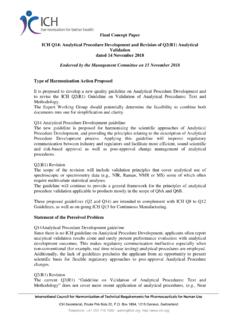
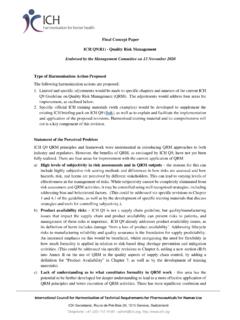
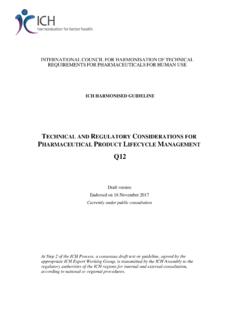
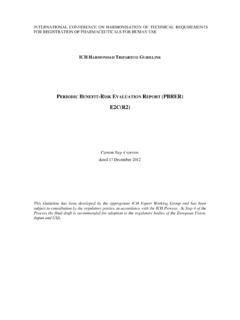
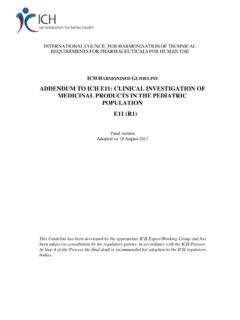
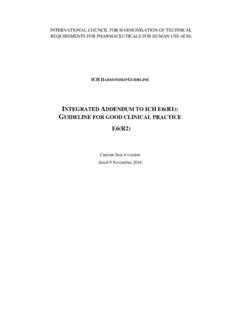
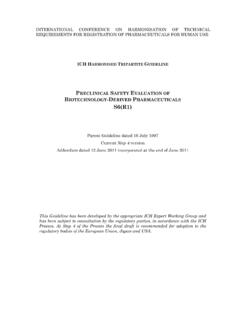
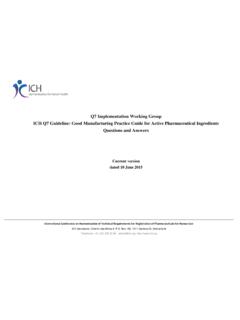
![[ICH E2F] [EXAMPLE DSUR – PHASE III INVESTIGATIONAL …](/cache/preview/e/7/a/2/e/6/3/0/thumb-e7a2e63043c4463724e748eb98faa3a7.jpg)
